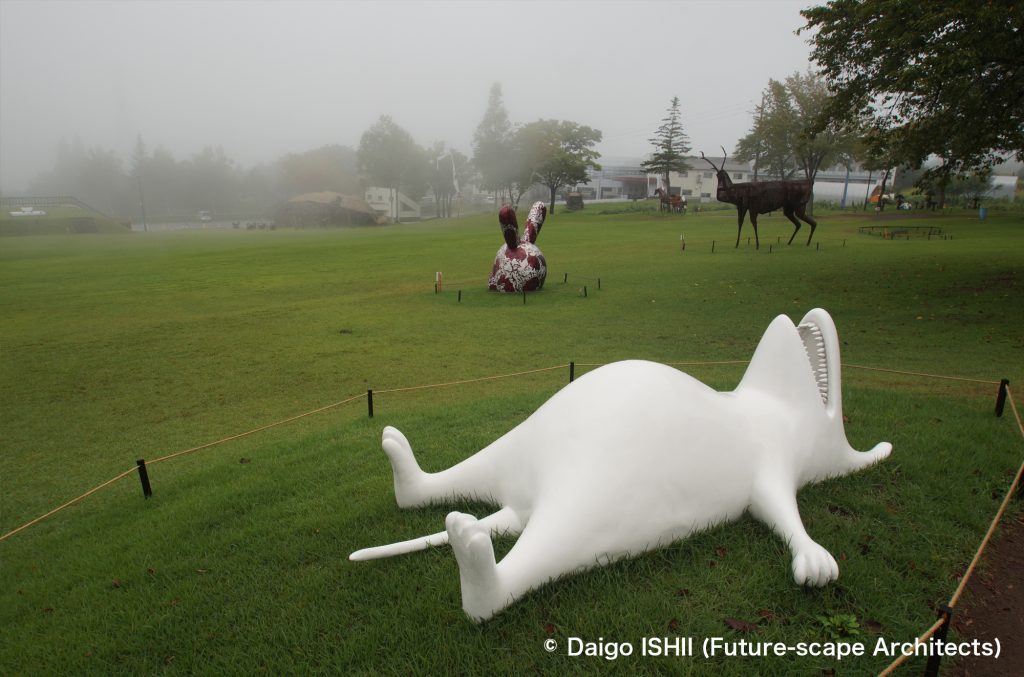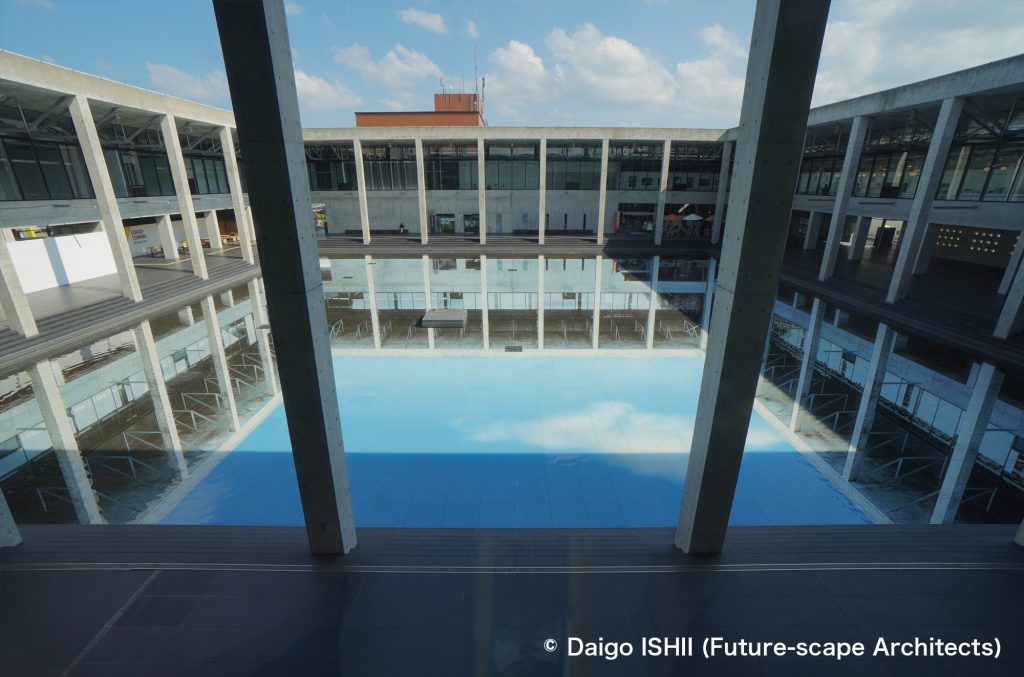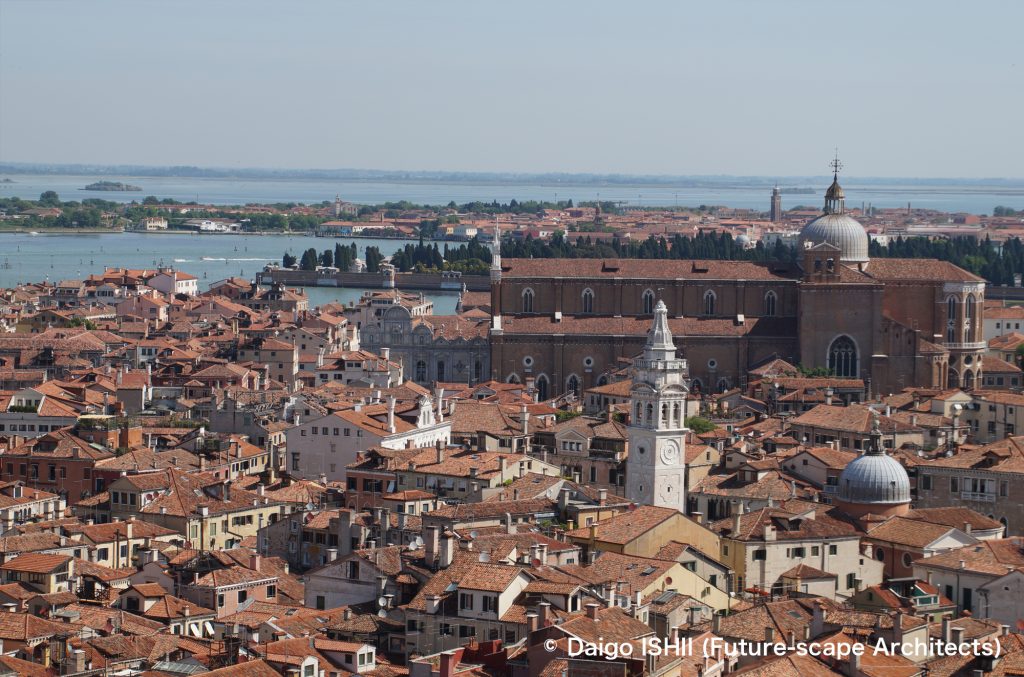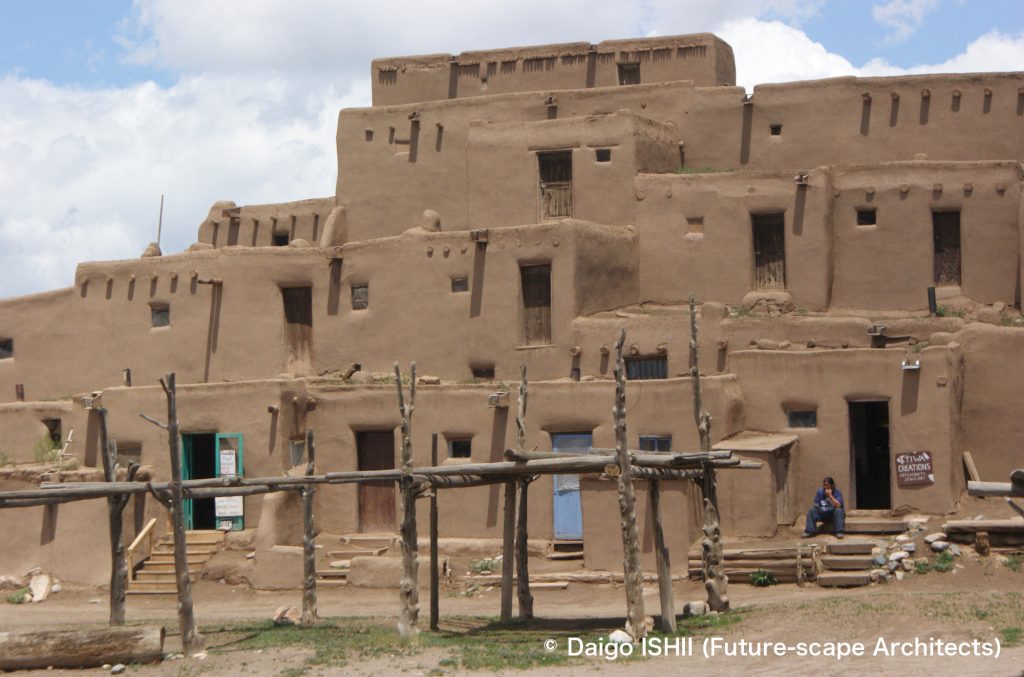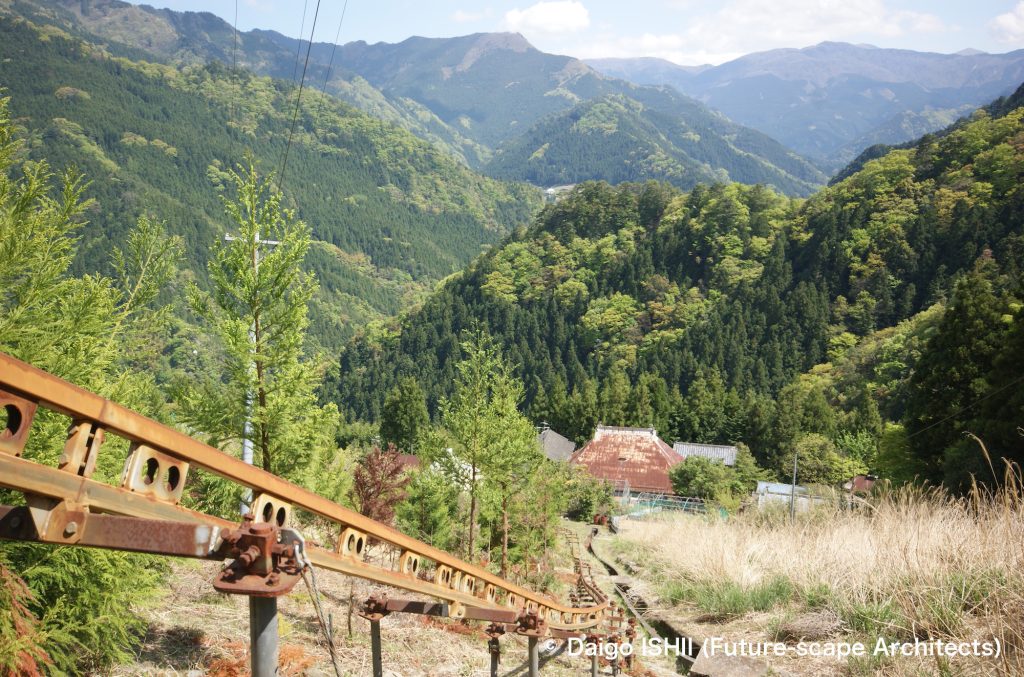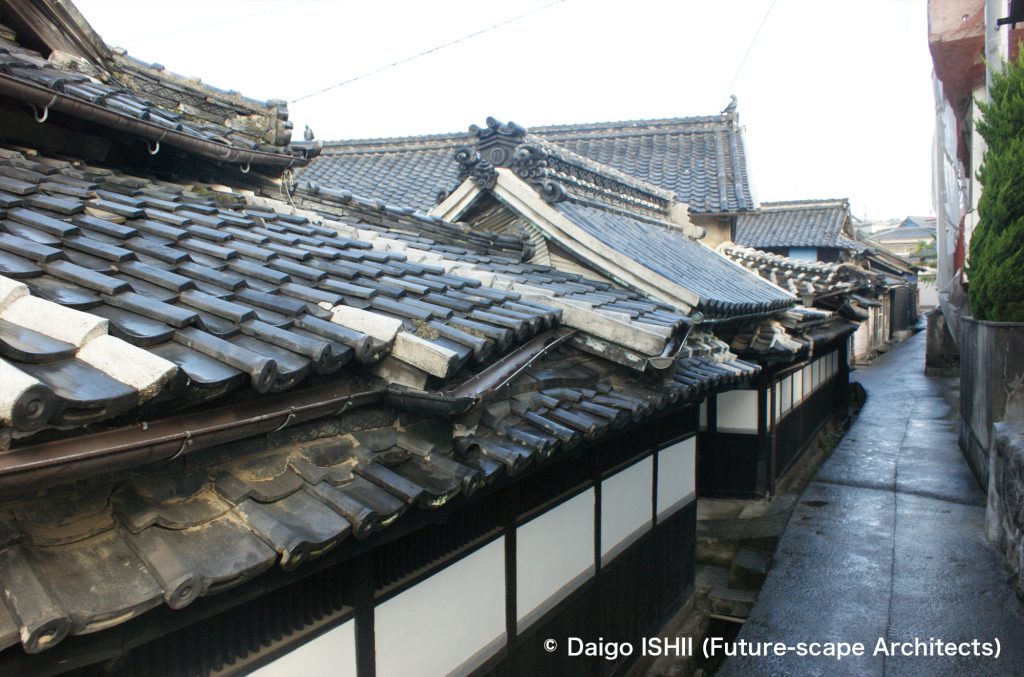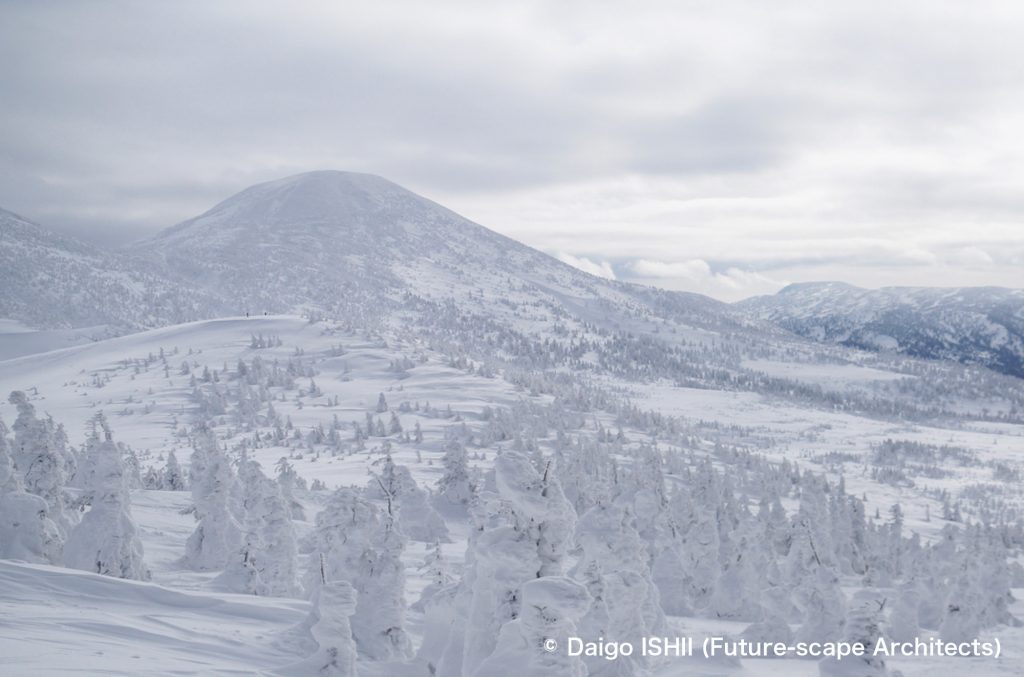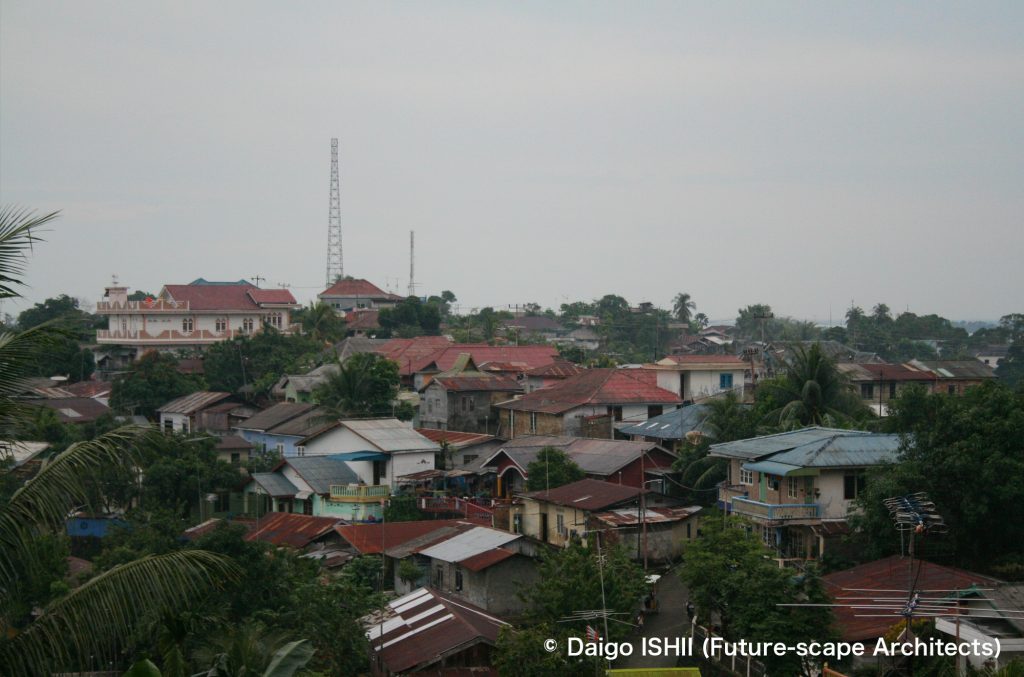ベネチアの広場に大抵ある井戸。水甕の形をした大理石の優雅なオブジェです。最初は、秀逸なデザインに、ベネチアの文化の成熟を感じましたが、考えてみれば、海の上に築いた都市なのに、掘って真水が採取できるのかと不思議になりました。
I found wells in Venetian squares. It is an elegant object of marble carved into a water bowl form. At first, it seemed to be the proof of the maturity of Venetian culture at the high level of design. But, gradually, I wondered if it was possible to collect freshwater even though it was a city built on the sea.

https://goo.gl/maps/QHJJALS8tEFuBJxM8
調べれば、この井戸は、海の上という不利な立地が生み出した創造的な仕掛け。
仕組みは、まず、広場の下を、6メートルの深さまで掘り込み、底に粘土を敷き詰めて、不透水層をつくります。その上に、地面まで砂を詰めて、水を濾過する層をつくり、石の舗石で覆います。広場に降った雨は、舗石の上を流れて、集水桝から、砂の層に入り、濾過されて貯水されます。砂の最下層まで達する中央の井戸には、濾過水が滲み出て、それを汲み上げて、飲料水として使ったのです。
19世紀半ばのベネチアの人口は15万人弱で、そこに、7000本の井戸があり、都市として機能するために不可欠な仕掛けでした。さらに、広場の形状を変えることは、井戸に影響するので、建物の壁面ラインの変更は不可とされ、都市景観を井戸がコントロールしていました。
陸から水道管が引かれた現在のベネチアでは、文化的遺構ですが、現代にも示唆するところ大。山の中の巨大なダムや地下神殿のような雨水貯留施設でもなく、ベネチアのように、サステナブルな構築方法で、都市の広場や道路を巨大な貯水池にする方法もあると気付かされました。
This well is a creative device generated by its disadvantageous location on the sea. As for the mechanism, first of all, a hole 6 meters deep was dug under the square, then the bottom was blancketed with clay to build an impermeable layer. Above the clay, sand was stuffed to the ground to create a layer to filter water and was covered with stone pavement. The rain that fell on the plaza flew over the pavement and entered the sand layer from the catchment basin to filter and store. Filtered water seeped out to the central well, which reached the bottom of the sand, and they pumped up to use as drinking water.
In the middle of the 19th century, 7,000 wells existed for the population of about 150,000. So it was an indispensable mechanism to support a city. Besides, changing the shape of plazas affected the well, so it was not possible to change the wall line of the building. The wells controlled cityscape.
In today's Venice, it is a cultural relic, but looks suggestive. I noticed that, instead of huge dams in the mountains or rainwater storage facilities like an underground temple, it is possible to turn city squares and roads into huge reservoirs in a sustainable way like Venezia.
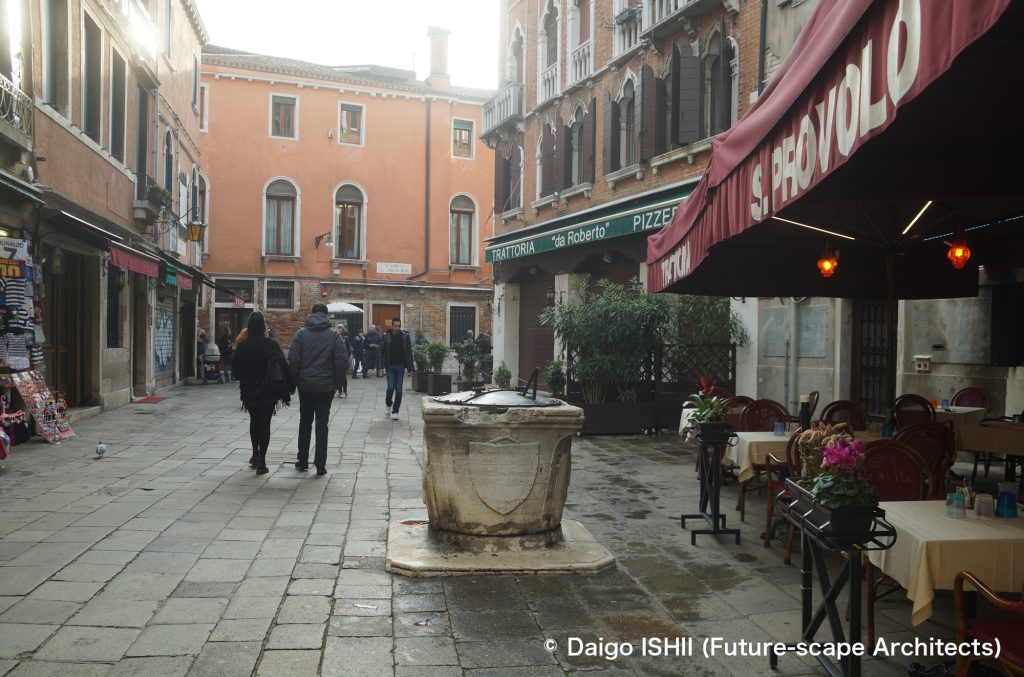
https://goo.gl/maps/bgA8d19s7UniEYEq9
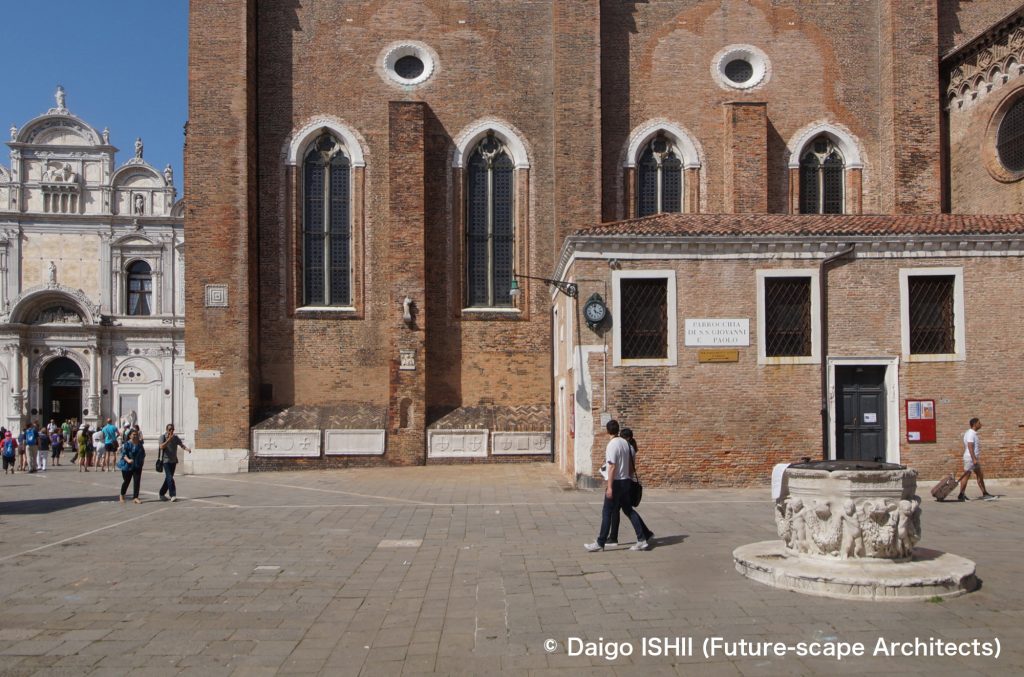
https://goo.gl/maps/K8pkSppbom5RtWVcA
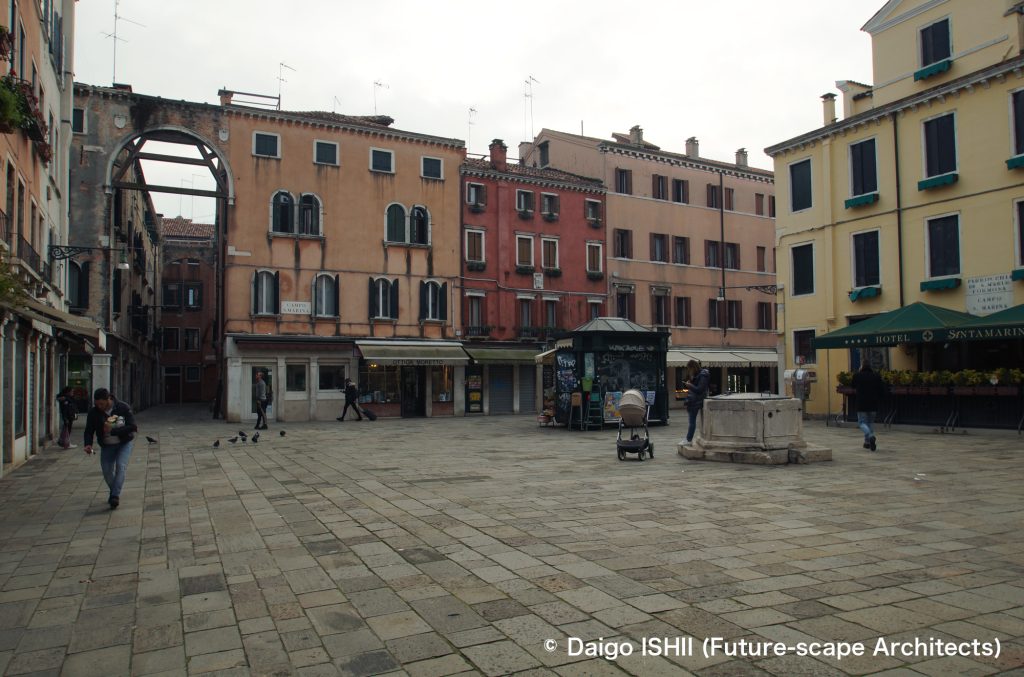
https://goo.gl/maps/9ffEmhkNfqWTq2zw8

https://goo.gl/maps/31K1DzD6wop8jbyS8
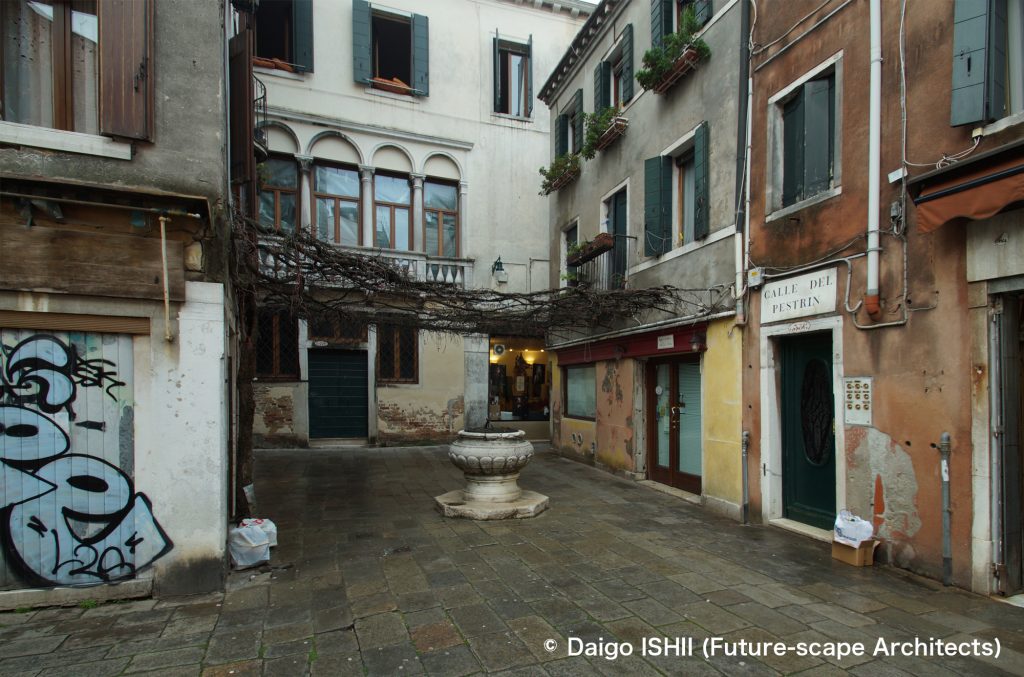
https://goo.gl/maps/dyyaABTFd5ZJVdyP6

https://goo.gl/maps/a2iKgtcHPifpDWEt7
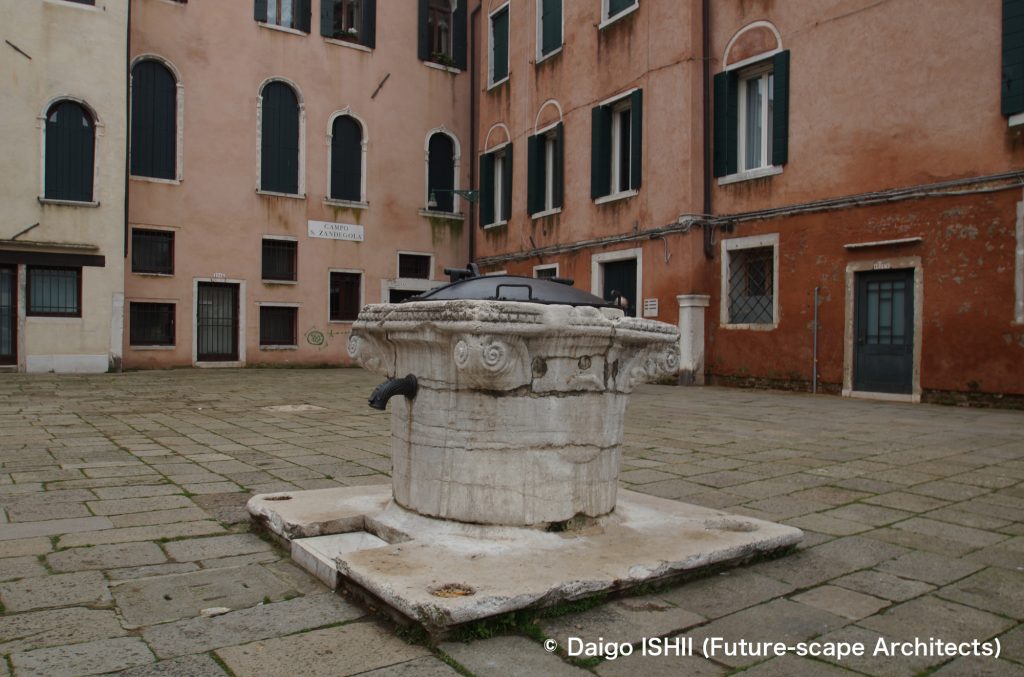
https://goo.gl/maps/aL2EWi2XSd1unCGY7
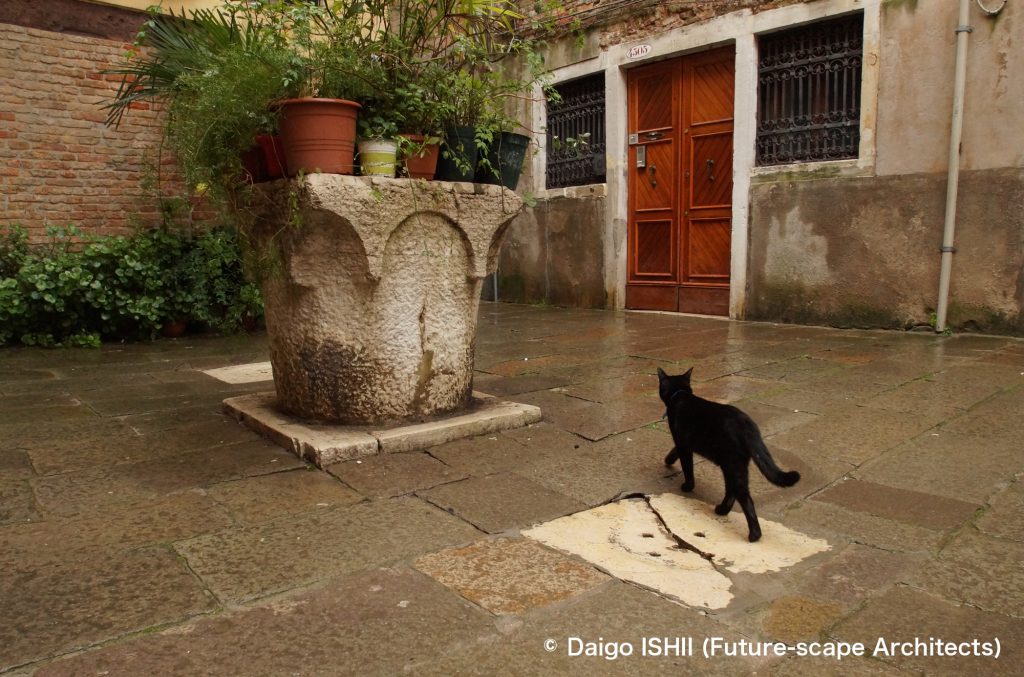
https://goo.gl/maps/a2iKgtcHPifpDWEt7
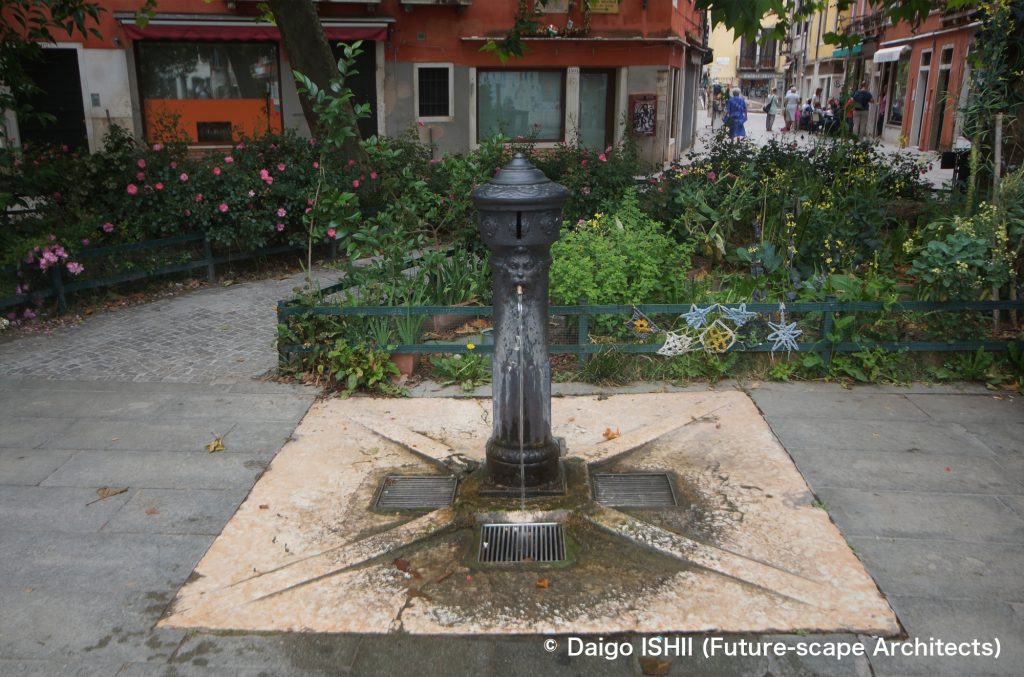
https://goo.gl/maps/31K1DzD6wop8jbyS8
ご感想はこちらへ / Click here for your impressions
参考文献 / reference
Art & Architecture Venice (Marion Kaminsky, h.f.Ullman, 2005)
ヴェネツィア (「旅する21世紀」ブック 望遠郷) (ガリマール社, 同朋社出版, 1994)
写真の無断使用、転用はご遠慮下さい。/ Please do not use or upload our photos without permission.
